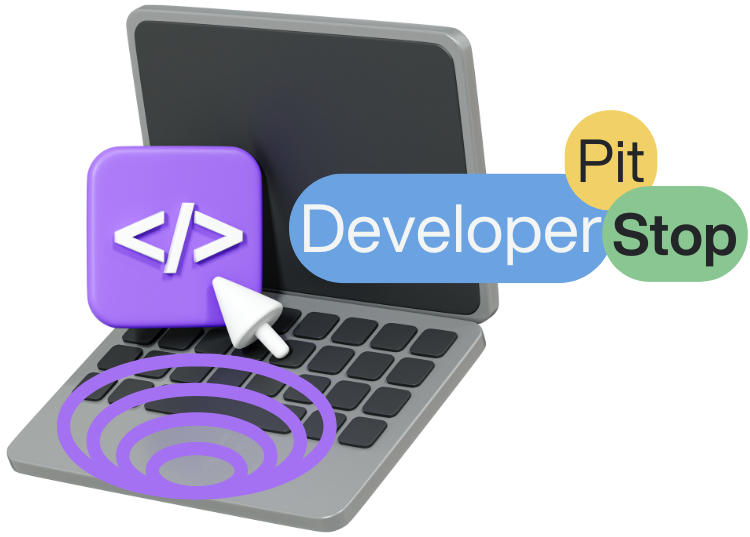The dress code for software engineers often defies the traditional corporate standard of a shirt and tie. Knowing what to wear as a software engineer can feel challenging, especially for those who were told that professionalism requires formal attire.
However, attitudes toward dress codes have significantly relaxed in recent decades.
Most software engineers dress casually. T-shirts and jeans are typical for tech team members, with some opting for a casual, open-button shirt. A shirt and tie are rare among dev teams, you’ll only see this level of formality in high-level client meetings or job interviews.
With dress codes now so relaxed, it can be hard to gauge what’s appropriate when starting a new job or going for an interview.
There are still times when formal attire is expected, and understanding these situations can save you from potential embarrassment.
Over the past two decades, workplace expectations have evolved, and even tattoos among software developers are now common.
Let’s discuss the software engineer dress code and explore when it’s best to dress up or keep it casual.
What Dress Code is in Use?
Most companies don’t set a strict dress code for software engineers. The general rule is simply to dress appropriately.
While this leaves some room for interpretation, it’s best to avoid anything overly casual or revealing.
Both male and female software engineers can typically wear a t-shirt and jeans and blend in well with their peers.
However, dress code expectations can vary by industry and company.
Asking about the software engineer dress code before your first interview is a good idea, as it can differ based on company culture.

Professional Services Companies
If you work in industries like finance or law, you’ll still need to dress in formal business attire every day.
Unlike tech and creative fields, these sectors maintain a conservative approach to dress codes, with expectations rooted in traditional corporate culture.
The client-facing nature of professional services reinforces this formality across all aspects of workplace culture.
As a software engineer, wearing casual clothing like a shirt and jeans may not be an option.
Even if your role involves limited client interaction, you’ll likely be expected to match the formal dress of your colleagues.
Some companies outline these requirements in employment contracts, while others rely on subtle reminders from management to uphold dress standards.
In software engineering, where creativity and flexibility drive innovation, a rigid dress code can sometimes stifle team dynamics.
Yet, these industries have to embrace more relaxed attire.
Here’s what to expect:
- Dress pants
- Shirt
- Dress shoes
- Tie (optional in some workplaces)
- Jacket (optional in some workplaces)
For Female Engineers:
- Business skirt or trousers
- Shirt or smart blouse
- Dress shoes
Your level of formality may depend on whether you’re client-facing, but most finance or law firms will expect a shirt and trousers as the minimum standard.
Non-tech Companies

The corporate world has largely moved on from strict dress codes, and outside of financial and legal institutions, most workplaces no longer require formal attire. What you’ll wear depends heavily on the company’s culture and size.
Smaller companies often embrace a more relaxed dress code than larger corporations, and this flexibility shows in what they expect employees to wear. Most workplaces now allow employees to dress casually within reason, though the specifics can vary.
For software engineers at non-tech companies, it’s wise to start out dressing smartly for the first few days, then adjust based on your observations.
First impressions matter, so dressing on the formal side initially lets you gauge the environment without underdressing.
Opting for overly casual items, like flip-flops on the first day, might not go over well.
- Smart jeans, pants, or chinos
- A dress or tailored pants
- A smart casual or formal shirt
- Smart shoes
- Optional tie and jacket
Navigating office dress expectations can be tricky, as they vary by company, region, and even country.
If you’re unsure, check with the recruiter or HR before an interview, and remember it’s better to overdress initially rather than underdress.
Tech Companies

Years ago, Google made headlines with its innovative workplace culture, aiming to create a fun, engaging environment where employees could freely express their creativity.
At that point, their software engineer dress code wasn’t as required.
The Googleplex featured amenities like indoor slides, video games, and nap rooms, setting the standard for how modern tech companies treat their software engineers.
Silicon Valley companies have since adopted a highly relaxed dress code, with specifics varying from one company to the next but generally leaning informally.
In contrast to typical office environments, flip-flops, and personal styles are often welcomed at tech startups and even encouraged to inspire innovation.
Many tech companies believe that allowing employees to be themselves fuels creativity and productivity.
In most tech companies, you can wear what you like, provided it aligns with the company’s culture.
While bikinis and board shorts might be acceptable at one company and too casual at another, it’s always best to check the company’s expectations.
When Should Programmers Dress Formally?
- Client meetings
- Job interviews
- Presentations to high-level stakeholders
Dressing appropriately for these occasions shows respect and professionalism. Meetings, where others are in formal attire, are ideal opportunities for developers to bring out their best outfits.
- Government workers
- Bankers
- Lawyers
- Detectives
But software engineers can’t always rely on sweatpants and flip-flops; dressing for the occasion remains essential.

Interviews
While a full suit isn’t necessary for a software engineering interview, it’s still wise to look polished.
Employers are more focused on technical skills than attire, but a good first impression matters. Dressing on the formal side shows respect for the interview process.
For an interview, aim for nice jeans and an open-button shirt at a minimum. Female developers might opt for a blouse.
Overdressing is better than underdressing; you only get one chance to make a first impression, and a sloppy outfit could hurt your chances.
Client Meetings
Formal attire may also be required for in-person client meetings.
If you work for an agency developing software for a financial institution, matching the client’s dress code can be essential.
It won’t look professional if you’re the only person in the boardroom wearing a T-shirt.
Whether formal dress is needed for clients will depend on their industry. If the client typically dresses casually, you probably don’t need formal wear either.
Matching your client’s dress code is a good way to build rapport and start the working relationship on the right note.
When Should Software Engineers Wear Casual Clothes?

Software engineers should generally stick to casual attire most of the time.
With over 65% of the IT industry working remotely, according to Statista, dressing up to sit in front of a computer screen doesn’t make much sense.
Even in the office, developers’ dress codes are almost as relaxed as they would be at home.
As a software engineer, you can typically wear this every day without issue. Of course, showing up in a vest, swim shorts, and flip-flops may raise some eyebrows, though this varies by company.
At Facebook, for instance, programmers often dress extremely casually with few restrictions.
For remote work, one of the perks is the freedom to wear whatever you want. If your company doesn’t require you to turn on the camera during meetings, you can wear anything, or nothing, if you prefer.
Many opt for business attire on top with casual bottoms. Few tech companies impose strict dress code guidelines, so you generally have free rein to dress comfortably.
Some developers choose business casual as their default when going into the office, which is a solid choice.
Dressing smartly can be an advantage, especially in larger teams or more formal environments, where it may make a positive impression.
Do Tech Companies Have a Dress Code?
Tech companies rarely enforce a formal dress code for software engineers.
Instead, they adopt a “dress appropriately” approach, giving employees the freedom to choose attire that feels right while allowing teams to establish their standards.
Many tech companies see a strict dress code as unnecessary, potentially stifling creativity.
Software engineers are highly valued assets in the tech world, responsible for building the next generation of innovative products.
Creativity is essential in this field, enabling engineers to tackle complex problems in ways.
Companies like Google and Facebook, for example, view dress codes as restrictive, like school rules that can inhibit creativity.
If you’re applying to a smaller tech company, you likely won’t find their dress code listed online.
- Contact HR before your first in-person interview
- Reach out to current employees on LinkedIn to ask about the dress code
- Review the employee handbook or documents you receive in the hiring process
Dress Code for a Software Developer Interview

For a software developer interview, dress slightly more formally.
Avoid t-shirts, even if current employees wear them, as first impressions matter, and underdressing can send the wrong signal. Stick to a polished, professional look.
- Choose clean, stain-free clothes
- Ensure your clothes are ironed
- Wear well-fitting attire
Clothes that are neat and well-fitted can go a long way. Aim to dress a step above what current employees wear.
For instance, if the team wears shirts and jeans, consider wearing a suit. If everyone is in suits, a well-tailored suit will do; there’s no need for a tuxedo.
To gauge the dress code, use LinkedIn, Glassdoor, or the company website. If most employees on the company site are in suits, formal attire is likely a safe bet.
It’s best to go slightly overdressed for a software interview. You can adjust once you arrive, if wearing a suit and tie, you can always remove the tie. For female developers, consider layering with a blazer or jumper for flexibility.
If you want to learn about the correlation between hardware and software, check our insight on that subject.
Dress Code for a Female Software Engineer

With almost 92% of software engineers being male, it can be challenging for female developers to gauge the typical dress code.
The guidelines for women are less defined simply because there are fewer female engineers in the field.
Navigating a male-dominated industry can already be tough, and dressing inappropriately can add to the challenge.
In Work
The software engineer dress code in a development environment applies equally to all genders.
Most female software engineers can comfortably wear a T-shirt, jeans, and flats in the office.
For a more polished look, a blouse with slacks or dark jeans works well. Still, that doesn’t mean that there is something wrong with business casual.
Ultimately, you should wear what feels comfortable, as long as it’s appropriate.
Tech roles thrive on creativity, which often calls for a relaxed work environment. Imposing strict dress codes doesn’t foster productivity or team morale.
Dressing authentically allows you to express your personality, which is valuable in a creative field.
As long as it aligns with company culture, you generally have freedom in your attire.
Skirts, pants, shorts, blouses, jeans, tops, and sweaters are all acceptable, whether paired with flats or heels.
Interview
Dressing up for an interview signals to your potential employer that you’re serious about the job.
While most tech companies have adopted casual or flexible dress codes, you should always dress professionally for an interview.
Even if employees typically wear t-shirts, it’s best to wear a blazer or another polished look.
Aim to dress a few levels above the everyday attire of current employees; underdressing can send the wrong message.
The safest approach is to overdress slightly and adjust once you secure the job.
Avoid anything with cleavage, thin straps, crop tops, see-through fabrics, or short skirts. These choices can create the wrong impression.
Can you overdress for a software engineering interview?
Generally, you can’t overdress for a software engineering interview, being well-dressed often reflects positively.
However, if a company specifically requests a more relaxed look, don’t overdo it.
For most interviews, dressing a bit more formally than the company standard strikes the right balance, allowing you to make a good impression without standing out inappropriately.
The tech industry’s relaxed dress codes may make you worry about overdressing, especially for companies like Google that promote casual environments.
However, dressing slightly above casual shows respect for the interview process and makes a strong first impression.
Choose a nice shirt or polo without going overboard. You must earn the right to dress casually bypassing the interview.
The Bottom Line
Being aware of a software engineer dress code can be essential for landing your dream job.
While the industry tends to have a relaxed dress code, dressing to impress for the interview can make a strong first impression.
On a daily basis, you’re free to keep it casual. However, certain occasions, like meetings with clients or executives, call for a more formal look.
Don’t get caught off guard during those key moments.

